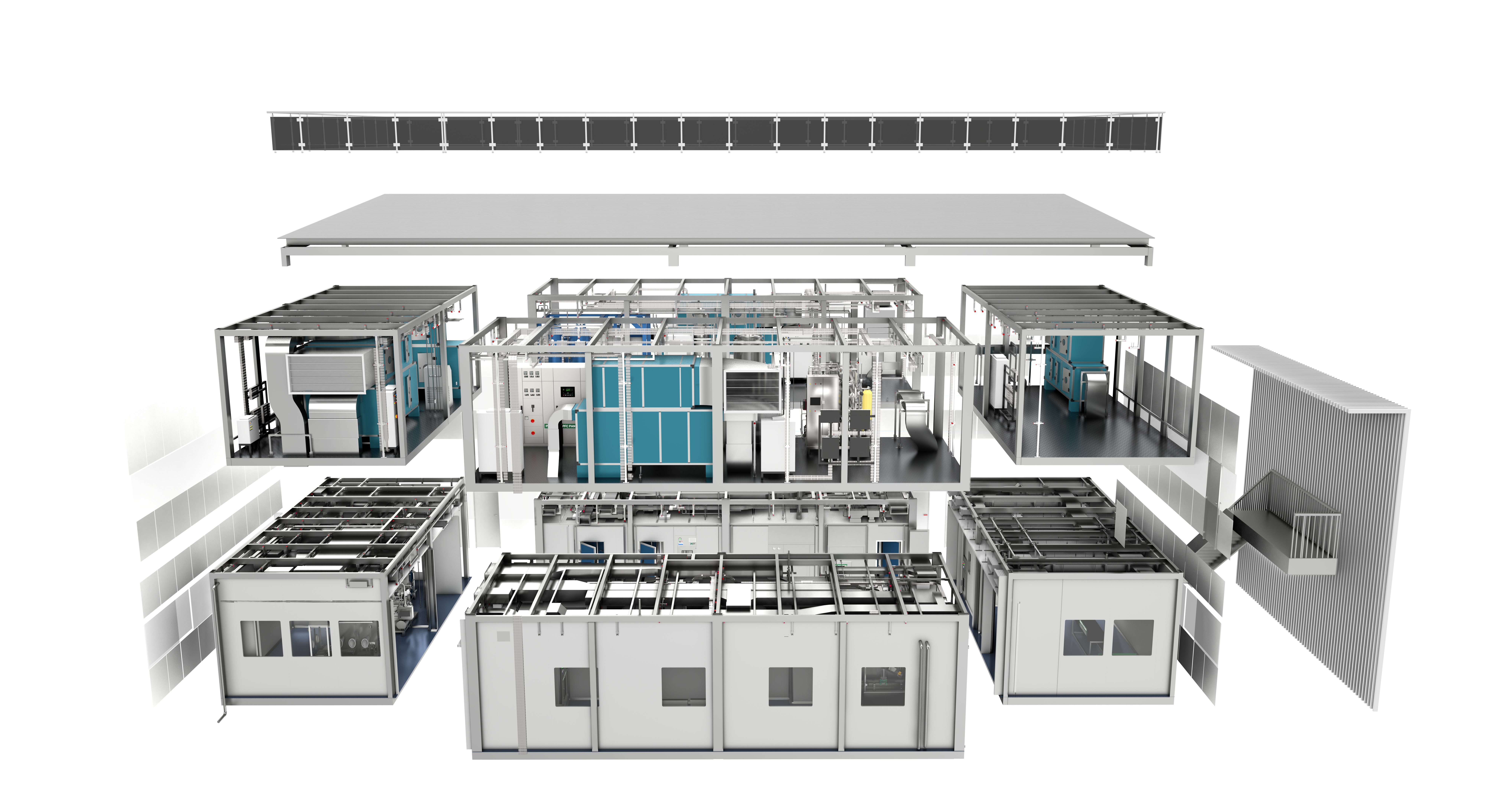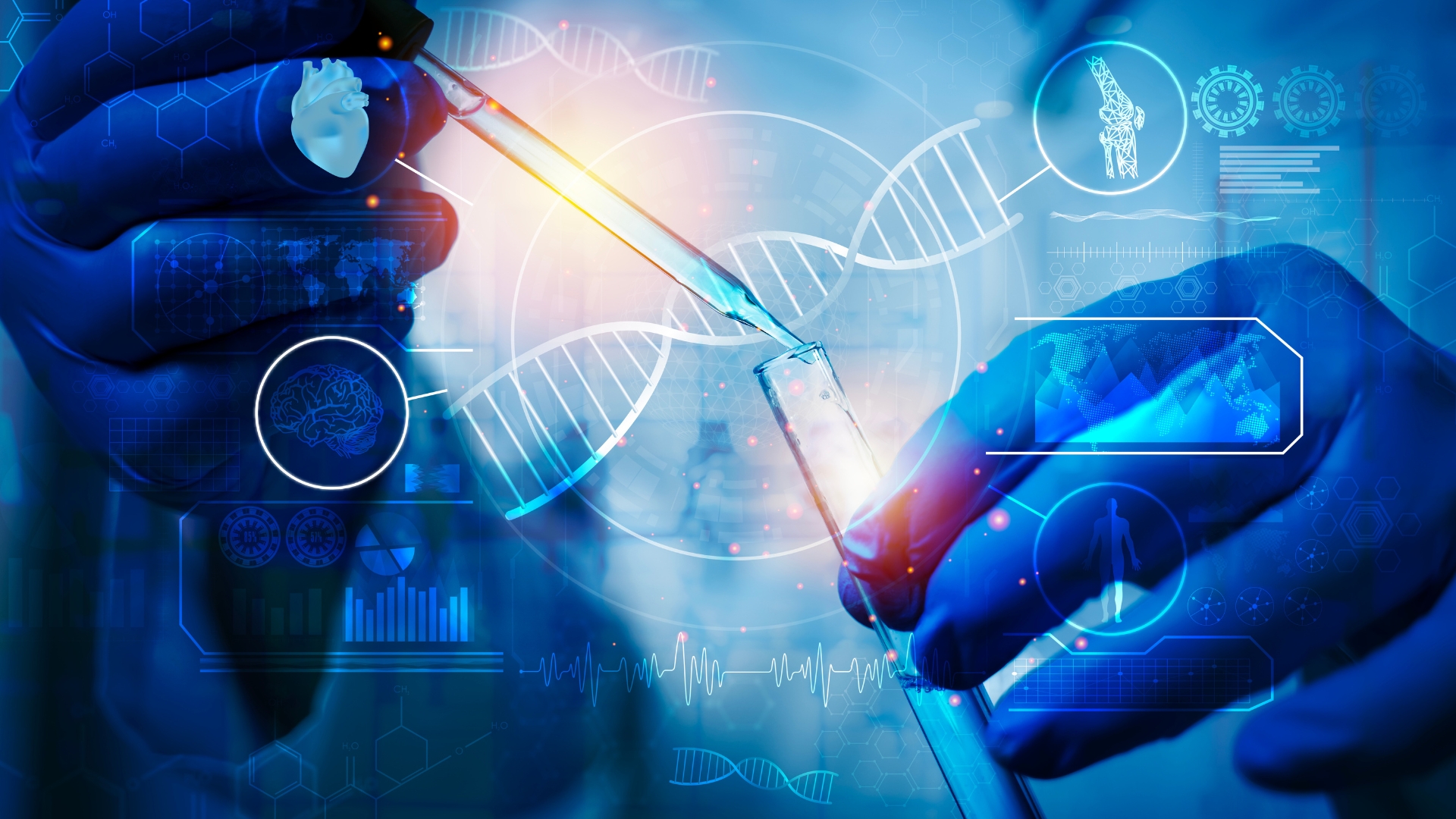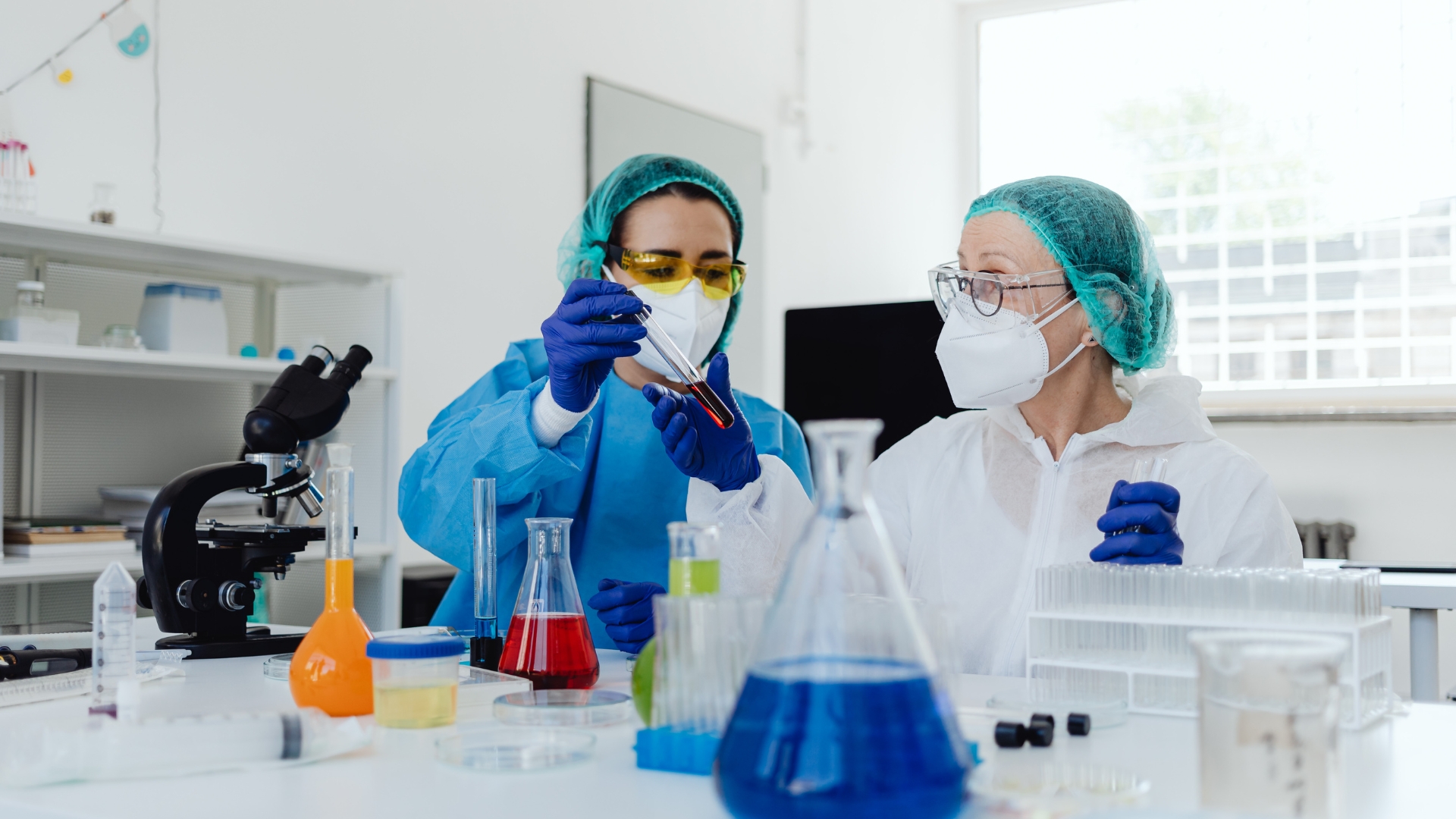Pharma manufacturing no longer includes giant steel vats and rows of workers in white coats.Given that it is no longer optional, demand and regulation are rising, margins are constantly under pressure, and there is an urgent need for pharma manufacturing solutions to ensure resilience following the COVID-19 supply chain shocks.
Given this scale, industry analysts expect the global pharmaceutical market to reach about $1.9–$2.0 trillion in the mid-to-late 2020s. Regulators and customers now demand faster supply, tighter traceability and higher quality, all without extreme increase in price. That pressure is accelerating change, driven by three key factors.
Automation reduces manual variation and limits contamination, AI converts data into timely decisions, and smart facilities connect them all together.
The rest of this article will explain how those three areas are already changing the way that drugs are made, and what it takes to deploy them safely.
Automation Revolutionises Pharmaceutical Production
Automation has evolved from mechanised filling lines and barcode readers to a much deeper reconfiguration of how a product is transformed from raw material to finished dose.
Robotics and Sterile Operations:
Robots now operate inside classified cleanrooms, performing tasks that once required repetitive human handling. These include vial filling, sterile transfers, precision pipetting, and automated inspection. Robotics reduces exposure risk for staff and lowers contamination opportunities that cause rejects.
Continuous Manufacturing:
Continuous manufacturing replaces discrete batch steps with an uninterrupted process flow.
That matters for several reasons: there are fewer hold steps, faster throughput, and a much smaller inventory footprint. Regulators have taken notice: the International Council for Harmonisation and the USFDA have issued guidance (ICH Q13 and the FDA’s continuous manufacturing guidance) to help companies implement and validate continuous approaches.
Experts have reported outcomes for continuous systems that include substantial reductions in manufacturing time and notable cost efficiencies.. The USFDA has now approved several drugs manufactured with continuous approaches.
Let’s break down the key benefits of automation in pharma:
- Quality Consistency: Every tablet or vial meets identical specs.
- Cost Reduction: Estimates suggest that automation can increase cost efficiency.
- Speed: Automated production lines run 24/7, increasing output exponentially.
- Safety: Robots handle toxic or sterile materials, protecting workers as mentioned on Good Manufacturing Practices: Sterile & Aseptic Processing – Pharma Access
- Compliance: Automated documentation and electronic batch records make audits less of a headache, and reduces human error.
So, the takeaway is that automation doesn’t just cut headcount; it boosts quality, trims costs, and reduces human error in one of the world’s most demanding industries.
Artificial Intelligence Applications Transform Manufacturing Operations
If automation is the hands on the wheel, AI is the navigation system. Artificial intelligence turns raw sensor data and processes data into decisions, sometimes in milliseconds, a speed humans cannot match, which some call a boon in this industry despite the debates on AI’s environmental impact.
1. Predictive Maintenance:
Breakdowns cost money. Sensors on machines (vibration, temperature, acoustic signatures) can be linked to AI models that predict part failure in advance. McKinsey estimates that predictive maintenance programs can increase machine uptime. and extend asset life when well executed, both of which add up to fewer lost batches and a more reliable supply.
2. Accelerating Formulation and Discovery:
AI has long been mainstream in early drug discovery. Now, AI-assisted candidate selection and design are a feature of the landscape, with major AI-focused drug discovery companies entering into collaborations with large pharma (Sanofi among them) to drive next-generation screening. These collaborations have led to milestone-driven progress and shown that AI-assisted screening can substantially shorten early cycle timelines relative to empirical screening.
3. Smarter Quality Control:
Vision systems run by machine learning algorithms inspect tablets, vials, and packaging with far more consistency than humans. Industry groups and technology vendors report higher rates of micro-defect detection with these systems; the result is fewer recalls and a higher assurance that only compliant products reach patients.
4. Business Impact:
AI can reduce unexpected stoppages with pharmaceutical quality systems. It can identify quality drift much earlier and speed up design decisions. Successful companies combine models with strong data governance policies so decisions can be traced and audited — a prerequisite for regulator acceptance.
Here is why AI applications matter in pharma:
- Real-time Decision Making: Adjusts processes instantly.
- Pattern Recognition: Spots trends and anomalies before humans notice.
- Resource Optimisation: Allocates resources like energy, raw materials, and labour more effectively.
- Risk Mitigation: Identifies potential issues before they snowball.
Smart Facilities: The IoT-Connected Pharmaceutical Future
Once you connect and measure everything, you end up with a facility that responds rather than reacts.
1. IoT and Live Monitoring:
Thousands of networked sensors log temperature, humidity, differential pressure, particle counts, and utilities use, among other inputs. Real-time monitoring replaces periodic manual logging with continuous assurance. This is not a hypothetical example: leading manufacturers report real-world benefits like improved visibility and faster corrective actions when instrumenting their sites.
2. Digital Twins:
Digital twins are software replicas of equipment or entire production lines that run in parallel with the real plant. Engineers can simulate changes to airflow, capacity, or process parameters without disrupting the real facility. Several large companies have piloted digital twins for vaccines or biologics production to speed troubleshooting and optimize throughput.
3. Connected Cleanrooms:
The modern cleanroom pipeline will also include automated access controls, environmental monitoring, and event logging that all feed a single operations dashboard. This means a faster response to particle count spikes or HVAC faults that could impact a process.
4. Regulatory Considerations for Advanced Manufacturing Technologies
Advancing technology poses two simple questions for regulators: can the process consistently produce a safe product, and can it be proven? Answering those questions requires discipline. Turnkey Project for Aseptic Facility in Tunisia
5. Validation and Explainability:
AI models can improve operations, but regulators will demand traceability. “Black box” models that make decisions that cannot be explained and fail batches present validation challenges. For this reason, many companies apply AI but also build in rule-based checks and maintain a strict versioning and training data log so a model’s behaviour can be reviewed in an audit.
6. Data Integrity and Cybersecurity:
Digital systems have more entry points. Regulators demand strong controls over electronic records. Cybersecurity must be part of facility design (authentication, telemetry encryption) because an attack that tampers with sensor data could have safety implications.
7. Regulatory Programs and Guidances:
Regulators are adapting: The USFDA’s Emerging Technology Program and ICH Q13 have elements that support the adoption of continuous manufacturing when science-based controls exist. EMA and other agencies are working on positions related to digital tools, and regulators have been receptive to industry pilots that include robust data packages.
8. Practical Approach:
Success requires early regulatory engagement, thorough validation plans and documentation that ties technology behavior to product quality attributes. That makes approvals more straightforward and reduces surprises down the line.
How Pharma Access Supports Manufacturing Transformation
Pharma Access is at the forefront of this revolution, not merely observing but actively facilitating it. Our portfolio of cutting-edge pharma infrastructure solutions empowers manufacturers to smoothly transition from traditional, outdated methods to future-ready smart facilities with zero downtime.
Here’s how PharmaAccess enables transformation:
- Automation Integration – Adoption of robotics, continuous manufacturing systems, and other automation tools for greater throughput.
- AI-Enabled Systems – Predictive maintenance, AI-driven quality control and drug formulation support.
- Smart Facility Design – Connected cleanrooms, digital twin simulations and IoT-driven monitoring systems that comply with global standards.
- Compliance Support – Validation, auditing and documentation for USFDA and other global regulatory agencies.
In short, PharmaAccess equips companies with the tools, resources, and support they need to remain competitive, compliant, and resilient in an industry where the future has no patience.
The Roadmap to Pharmaceutical Manufacturing’s Future
The transformation of pharmaceutical manufacturing is both inevitable and actionable. Automation reduces human variation and contamination risk with pharma engineering turnkey solutions. AI turns data into timely and auditable decisions, and smart facilities give leaders the visibility to run complex facilities reliably by turnkey clean room solutions for pharma. Regulators are not trying to stand in the way of this change; rather, they are setting science-based frameworks to allow proven systems to scale.
For manufacturers and supporting infrastructure partners, the practical steps going forward are clear:
- Assess Data Readiness. Inaccurate data wrecks even the best AI models.
- Start with high-value pilots. Predictive maintenance or a single continuous line are good, manageable places to start.
- Design for validation. Traceability, explainability, and cybersecurity should be built into systems from the beginning.
- Train the people, not just the machines. Upskilling the workforce is not optional.
- Engage regulators early. Transparency shortens approval cycles.
The pharma manufacturing of the near future will be faster, cleaner, and more predictable. It will not eliminate the need for skilled operators and quality scientists, but it will change how they spend their time, hopefully moving them from repetitive tasks to high-value problem-solving.
For companies that act, invest wisely, and work with regulators, the upside is stable supply, cost efficiencies, and better patient outcomes. For those who don’t, the gap between leaders and followers will only grow wider.
Are you ready to move from talking to implementation? The technology and regulatory frameworks are there; the next step is practical project design and disciplined execution.
Frequently Asked Questions
1. Why is automation a big deal in pharma manufacturing?
Automation reduces human error, enhances efficiency, cuts costs, and maintains consistent quality, all critical in an industry where lives are on the line.
2. How is AI enhancing pharma manufacturing?
AI is enabling predictive maintenance, faster drug formulation, and more rigorous quality control measures by crunching and analysing data sets that are simply too large for humans to process in a meaningful time frame.
3. What exactly are smart facilities in the pharma industry?
Smart facilities are completely integrated and monitored environments for pharmaceutical operations. They use IoT, digital twins, and connected cleanrooms to provide a safe, compliant, and sustainable ecosystem for pharmaceutical manufacturing.
4. What are the challenges associated with these technologies?
Regulatory compliance, validating AI systems and algorithms, the initial capital investment, and retraining the workforce are some of the challenges that companies could face when implementing these solutions.
5. How can PharmaAccess assist manufacturers in this transition?
Pharma Access is a one-stop solution for infrastructure, smart facility solutions, automation systems, and compliance support to help manufacturers seamlessly adopt the latest technology without disrupting current operations.



